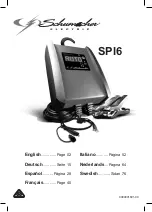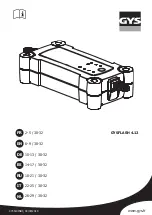
5. CALIBRATION AND MAINTENANCE
b. If readings differ more than ± 0.2 millivolts
(amperes),
continue
with steps K through
M.
J.
OPEN THE CA-1550
If voltmeter differs more than ± 0.2 millivolts (amperes), open the front panel of
the CA-1550 by removing the two screws on the right side of the panel.
WARNING: Calibration needs to be performed with the unit’s cover
removed as well as both mains power and battery connected. It should only be
performed by trained personnel. If performed incorrectly it could result in
electrical shock leading to injury or death.
K.
CALIBRATE AMMETER
The ammeter can be found on the back
side of the front panel. Locate the
ammeter trimpot.
Using a 1/16 inch (2 mm) slot blade
precision type screw driver, adjust the
embedded trimpot located at the rear of
the voltmeter. Adjust until voltmeter
reading matches that of the calibrated
voltmeter (at least within ± 0.2 amperes or
millivolts).
L.
REPEAT FOR ADDITIONAL CURRENT SETTINGS
To verify the accuracy over the range of the meter, additional current
settings can be checked. Since the CA-1550 digital meters are linear,
checking two or three current settings are adequate to verify the range. The
easiest way to check an additional setting is to repeat steps H and J but
setting a lower charge current in step H.
5.4
SHUNT VERIFICATION
The CA-1550 internal shunt is calibrated and certified by the shunt manufacturer.
The shunt is a linear resistive device consisting of a heavy brass base and heavy
manganin (copper alloy) resistance. It is not possible to calibrate the shunt.
However the shunt can be verified with the help of an external calibrated shunt and
a millivoltmeter (see Figure 5-3).
CA-1550 CHARGER / ANALYZER - OPERATING MANUAL LI-4159-CML Rev A
Page 31











































